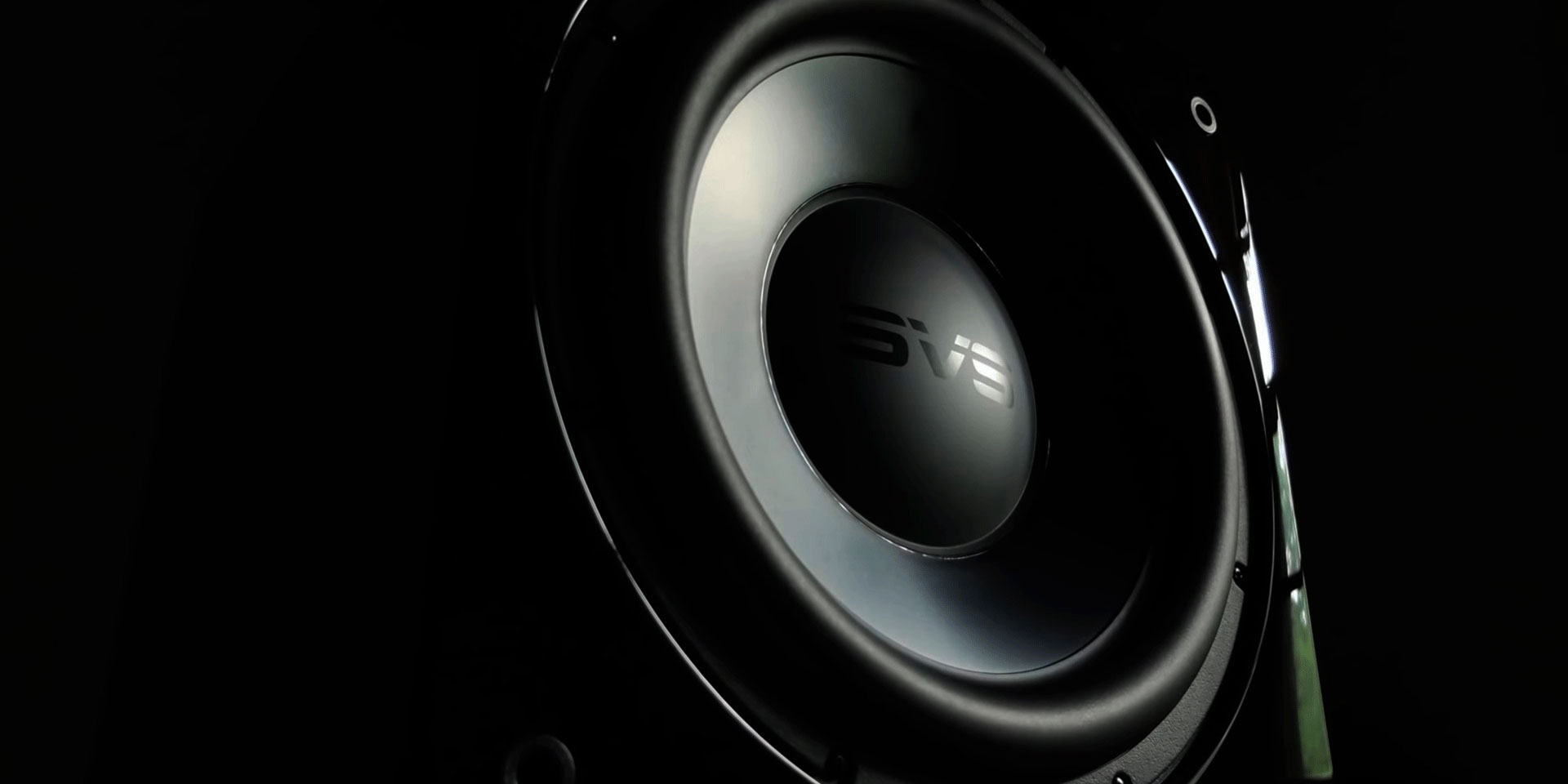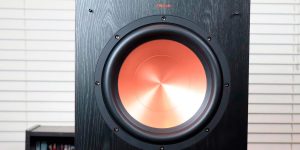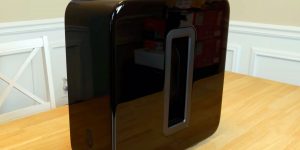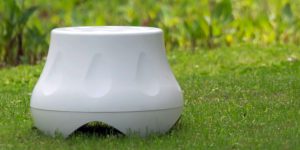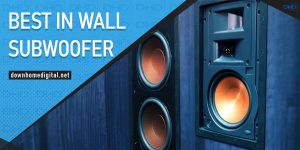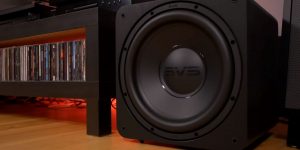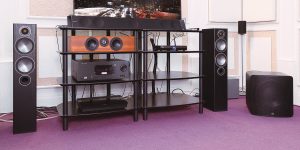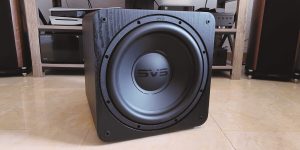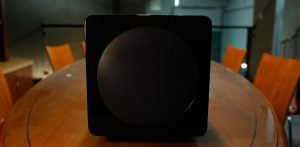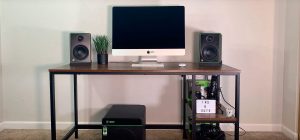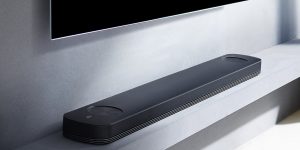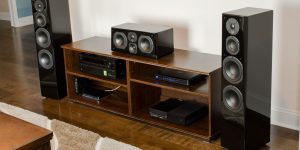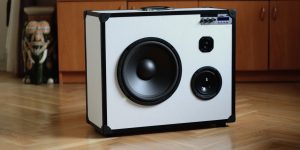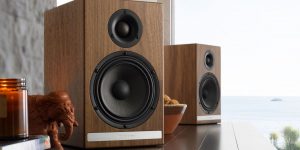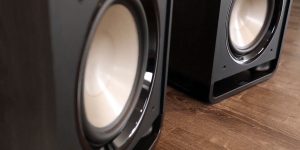There are different types of subwoofers on the market today. To decide whether to get the best sealed subwoofer or a ported one, you should know more about them.
Sealed subwoofer housings place the subwoofer in a secured box so that the front cone of the speaker only protrudes from the box. It emits a solid bass without generating a vibrating boom in compact cabinet construction.
Ported subwoofer enclosures use the same structural design as the sealed speaker, but the enclosure has an additional opening near the back of the cone. The rear sound waves can exit the housing through the opening or connection.
My review today is dedicated to sealed box subwoofers, and I have prepared some interesting models for you. I will tell you about their features, advantages, and disadvantages, as well as give advice on which models you should not buy. So let’s start with that.

Sealed subwoofers comparison table
| Name | Power, W | Driver size, inch. | Frequency response | Dimensions, inch (HxWxD) | Review |
|---|---|---|---|---|---|
| SVS SB-3000 best overall | 800 | 13 | 18Hz-270Hz | 15.2×15.6×17.8 | Review |
| Kanto sub8 budget | 125 | 8 | 35Hz-175Hz | 11x11x11.9 | Review |
| Definitive Technology DN8 | 500 | 8 | 34Hz-175Hz | 12.8x12x13.1 | Review |
| KEF KUBE 8b | 300 | 8 | 34Hz-140Hz | 11.6×11.6×11.6 | Review |
We don’t recommend
SVS SB-4000

Cons
- The price is unreasonably high.
- It does not have an automatic setup what requires more time to assemble the unit.
- Without IP control, you need to adjust all settings manually.
- No high-level inputs.
- It is quite heavy, and if you want to move the subwoofer, you will need ass.
Best sealed subwoofer reviews
SVS SB-3000 – best overall

The most expensive rated models rarely top my charts, but for the SVS SB-3000, there really is no competitor. It’s worth every cent, so it deservedly takes the first place. Besides, the cost of the subwoofer, unique in its structure (a 13-inch speaker is built into a 15-inch cabinet), is not so exorbitant. Take a closer look at it; I’m sure you will agree that this SVS-sealed subwoofer can win the hearts of many fans of quality sound.
The housing is very compact. Its sealed cabinet delivers bass without redundant vibrations. Double-thick MDF and rigid bracing firmly keep a powerful driver. It is not very large, which allows you to place it in convenient locations in the room to receive better sound quality.
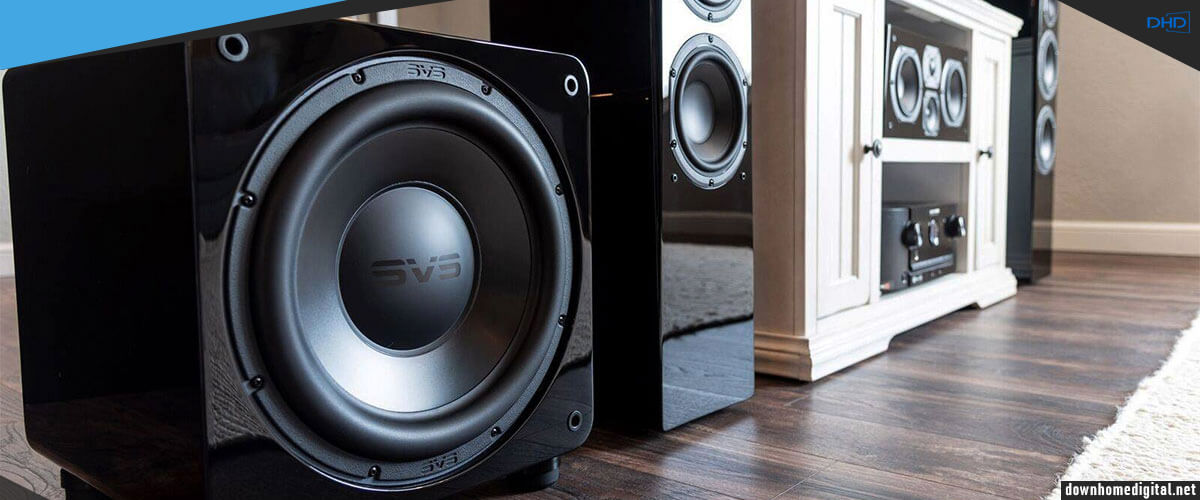
It has a 13-inch high excursion driver and 800W of output. The peak power allows you to reach more than 2500W of power. As a result, you receive amazing bass. Inside this unit, you also have a Sledge STA-800D2 amplifier. It brings out the full potential of SVS SB-3000. Moreover, its design combines features of D class amplifier with a large current to create real-world like sound.
The rear panel is different. It has an ICI interface for manual adjustments and a pair of standard A&B in/outputs. If you plan to connect it with other devices, you will not have difficulties. SVS SB-3000 has three-band parametric EQ and adjustable frequencies, which you can manage with a mobile application. The whole unit is just a 15-inches cube. It easily fits various rooms and can be placed on the floor.
The conclusion, or even a recommendation, is not to save money on equipment if you know about music. SVS SB-3000 fully justifies its highest price in this review. It’s sealed, it’s pretty, it’s made of great materials, and it doesn’t take up much space. You can control it with the mobile app or customize it with the control panel on the back. Mount it wherever you want, or mount it on the wall. Its main advantage is its 13-inch speaker, which is powerful (800W) and delivers great bass. At the same time, the cabinet is only 15 inches diagonal. You won’t hear cabinet kickbacks, vibrations, or unwanted noises. SVS knows what they’re talking about.
Key specs
- Power (RMS), W: 800.
- Driver size, inch: 13.
- Frequency response: 18Hz-270Hz.
- Dimensions, inch (HxWxD): 15.2×15.6×17.8.
Pros
- With the Digital Signal processing, you receive precise and controlled bass.
- The remote mobile application has enough range to control the subwoofer from larger distances.
- It does not require a lot of time to unpack, install and adjust all the settings.
Cons
- The subwoofer does not have many in/outputs to connect multiple devices.
Kanto sub8 – budget

If you are looking for a nice sealed powered subwoofer in a budget category, then you will be interested in Kanto Sub8. It has a nice and simple mate design, which can be of black and grey colors or gloss white and black. The housing is easy to carry as it is made of lightweight and rigid aluminum. The fiber dust cap protects the speaker and allows users to receive a fast response. It belongs to active subwoofers that do not require additional equipment to deliver sound. Moreover, you will not receive unwanted vibrations due to an acoustic grade MDF cabinet.
It all sounds pretty good, doesn’t it? However, the cost of the Kanto Sub8 is too cheap, and this fact is immediately obvious. The plastic is cheap to the touch, the mesh is thin, and it can easily be pushed through with a finger carelessly. The connectors are flimsy. But it looks surprisingly nice and quite fulfills its task (as for a budget option), although it looks more like a desktop PC speaker.
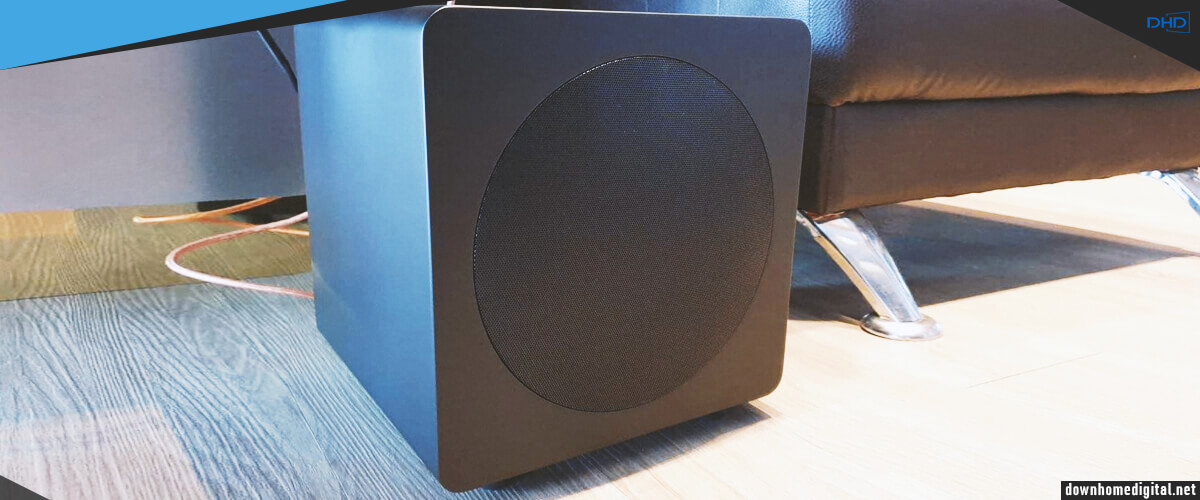
Another reason why you receive such precise and wonderful sounds is the powerful output of 250W. With 8-inch, you receive a balanced and detailed bass response of favorite soundtracks. Kanto Sub8 also serves as a D class amplifier of 215W. Is it worth comparing the sound of this model with the SVS SB-3000? In this case, we will have to scold it from beginning to end because the difference is too obvious. But let’s just treat it with leniency. It produces low frequencies without making noises when working. But when turned off, you can hear the hum. So, is it such a disadvantage for a budget option?
In case you plan to join it to your audio system, the Kanto subwoofer has a precision crossover filter system with a phase switch. Additionally, as every room is different, on the rear side, it has switchers to adjust frequency and volume to receive bass you like.
Kanto Sub8 is a good budget-sealed subwoofer for music at home. It can hardly be used in a large room (power is only 250W), but in a small studio, it sounded quite convincing, quite clearly conveying the author’s idea. Besides, you won’t have to pay extra for an amplifier at such a low price because Sub8 is active. So, for those who want a sub but don’t want to spend all their savings – take it. Among its congeners, it stands out in its nice design and quite pleasant sound. However, I am not ready to confirm its durability, and I advise you to treat the grille carefully. I would also secure it well when installing it.
Key specs
- Power (RMS), W: 125.
- Driver size, inch: 8.
- Frequency response: 35Hz-175Hz.
- Dimensions, inch (HxWxD): 11x11x11.9.
Pros
- You receive precise and high-quality sounds.
- It does not require a lot of space and easy to move.
- Simple control and management via a smartphone application.
Cons
- When the subwoofer does not play music, you can hear a noticeable hum.
Definitive Technology DN8
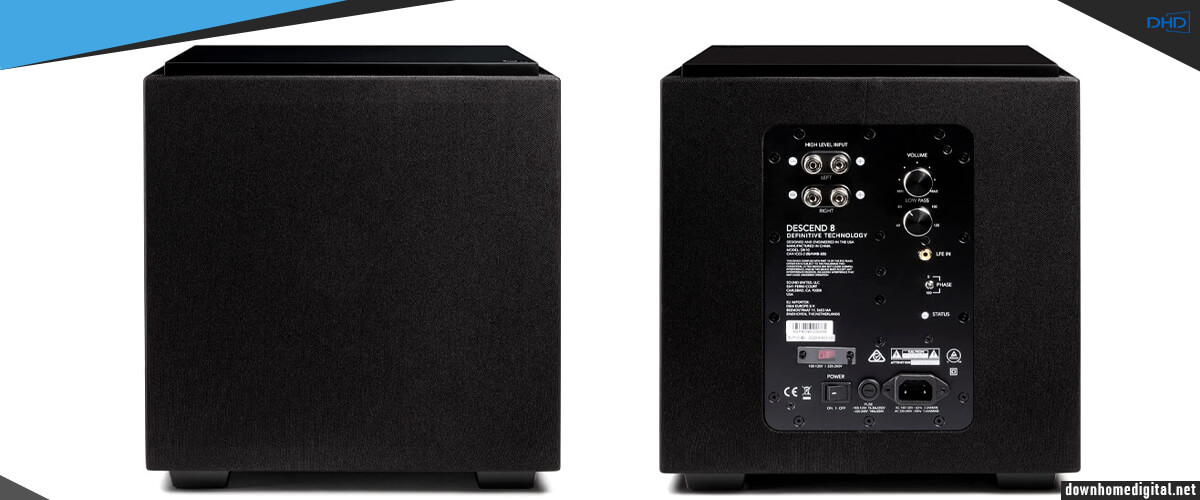
Next, I would like to introduce you to a compact 8″ subwoofer equipped with a 500W Class D amplifier specially designed for music and movies. This model is designed in the proprietary 3XR Architecture with a closed box with a pair of symmetrically arranged passive radiators operating from a single driver. Thus, the effective radiating area is optimized for cleaner and more accurate sound. Technically, the range is increased by 3 times compared to a subwoofer with traditional ports.
So, in terms of design, Definitive Technology DN8 is simply gorgeous (to my taste). It’s hard to realize that it’s a sub in general. It looks more like an ottoman and will fit into any interior. The finish is high quality; the sub is not light, so there are almost no vibrations. And for a good effect, you can buy 2,3 or more of these things (if the budget allows), and arrange them around the room (especially good for watching action movies). The unit’s size (12.8″ x 12.0″ x 13.1″) allows you to find a place for it in your room easily. The DN8 is available in either Midnight Black or Glacier White. Take your pick, but I will point out that both look classy and expensive.

In addition, the 3XR Architecture provides deeper bass in a smaller form factor thanks to its unique design. The size of the speakers almost matches the size of the subwoofer itself. Since no traditional bass ports are used in this design, the sound quality of the Descend Series subwoofers is virtually unaffected by noise and distortion. Furthermore, the DN8 is equipped with a special amplifier for the efficient reproduction of bass frequencies, which is quite difficult to achieve given its compact size.
With a built-in controller for output level adjustment, low-pass filter, and phase control, the Descend DN8 integrates perfectly into your multimedia system. It also adapts well to the acoustics of the room.
The Definitive Technology DN8 is an excellent mid-range closed subwoofer. It is unusual and beautiful, fits in the interior, has a special amplifier, and has no traditional ports. However, you will have to buy two devices to make it sound approximately as powerful as the SVS SB-3000. That means that you won’t gain much in terms of cost. And yet, you won’t achieve the same results. After all, it’s clear that an 8-inch speaker can’t compare to a 13-inch speaker, though the manufacturer claims that it sounds like a 10-inch speaker (well, I agree, the sound is really very good and powerful for a small sub). So I’m leaning towards the opinion that it would be suitable for a small room. Or for those who can’t spend a thousand bucks immediately but can buy two over time.
Key specs
- Power (RMS), W: 500.
- Driver size, inch: 8.
- Frequency response: 34Hz-175Hz.
- Dimensions, inch (HxWxD): 12.8x12x13.1.
Pros
- 3XR Architecture.
- Passive radiators for louder, lower, and cleaner bass.
- Blends well with any system.
- 500W Class D amplifier.
Cons
- May not meet the needs of users who like heavy bass.
KEF KUBE 8b
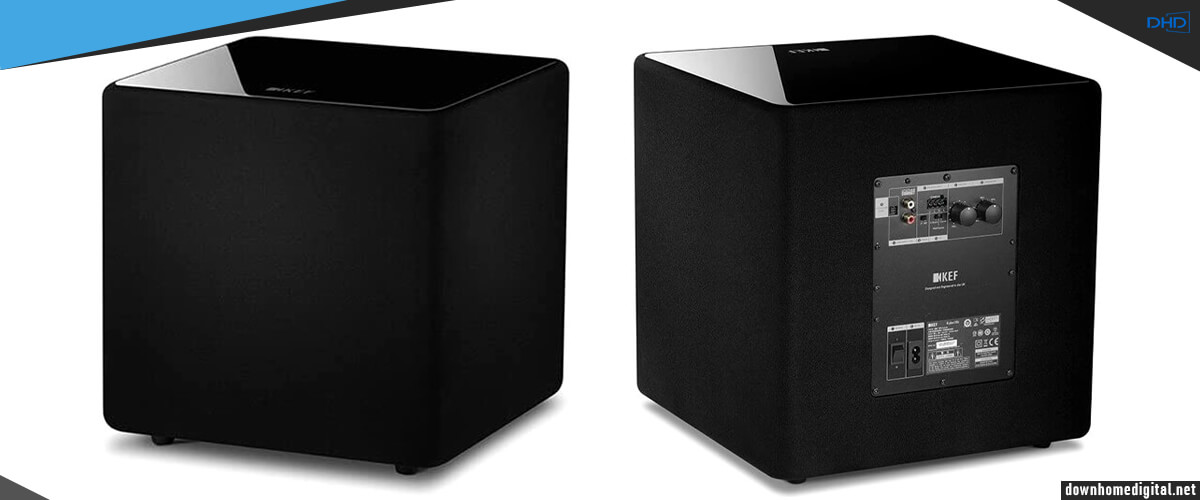
In addition to home and theater speakers, KEF introduced the subwoofers of the KUBE series at the end of 2017. This series also included my “guest” today, the 8-inch KEF KUBE 8b. It looks similar to the Definitive Technology DN8 but costs a bit more. Here are the important differences that will help you with your choice.
The subwoofer is upholstered in fabric, the top panel is lacquered, and all the controls and switches are located in the back. In principle, everything is pretty standard. The enclosure is closed, which means that there is no phase-inverter port. In addition, the model is equipped with a 300-watt Class D amplifier, as well as the proprietary algorithm iBX (Intelligent Bass Extension), which increases the bass depth.
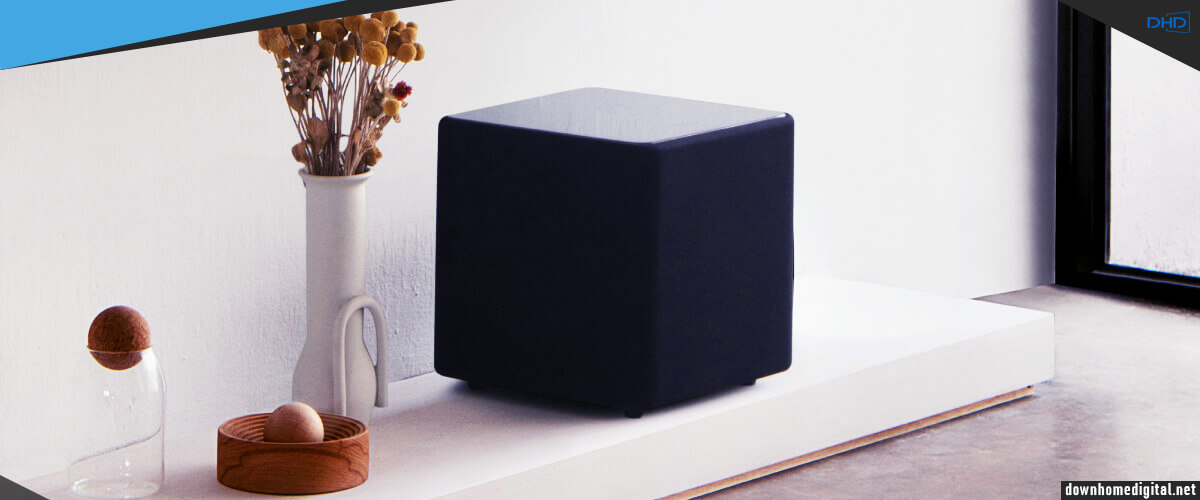
Another interesting feature of this model is DSP sound correction for different placement options in the room. There is a switch on the rear panel with three positions: in the corner, against the wall, or free placement. DSP takes into account changes in sound characteristics due to bass boost in close proximity to walls and corrects them to achieve an even amplitude-frequency response. Other controls include a 0/180 phase switch, volume control, and crossover cutoff frequency control. Both line and high-level inputs are provided. The stereo line input has SmartConnect, which detects that only one channel is connected to the input and automatically adds volume. And the high-level is not made with traditional screw or spring terminals but with a compact and convenient Phoenix connector. In addition, both inputs work simultaneously, allowing you to capture the signal from the front channels and the LFE output.
My test took place in a room of about 300 ft². The source was a Blu-ray player Theta Digital Compli Blu 3, and Primare SPA23 acted as an amplifier. I limited myself to listening to fragments of my favorite “Deadpool” and fragments of various movies from the very popular “Atmos Demo Disc”. To put KEF KUBE 8b into this system was not difficult, but it was better to experiment with the switch of DSP modes and choose the most suitable of the three. The device reproduced a harsh, resilient bass without dominating and irritating extraneous sounds. In general – a pleasant sensation of the “weight” of flying planes, explosions, and other special effects. The bass frequencies were fast, harsh, and almost without aftershocks.
Overall, the KEF KUBE 8b performed well for an average-sized room of 300 square feet. The sub offers several advantages (besides its obvious compactness and ease of fit): DSP sound correction, which helps you place it where you want it and adapt it to the conditions (against a wall, in a corner, without walls); SmartConnect, which detects that only one channel is connected to the input and automatically adds volume; and the proprietary iBX (Intelligent Bass Extension) algorithm, which increases bass depth. All of this combined in testing allowed me to place the model in the ranks of winners among the hermetically sealed ones. And yet, along with the obvious cool features, the power of KUBE 8b is small (compared to Definitive Technology DN8) and is only 300W (forgive 500W). But that’s what’s interesting about the ratings because I try to select a variety of devices so that your choice will be as individualized as possible for your needs.
Key specs
- Power (RMS), W: 300.
- Driver size, inch: 8.
- Frequency response: 34Hz-140Hz.
- Dimensions, inch (HxWxD): 11.6×11.6×11.6.
Pros
- Great sound in movies.
- DSP correction.
- SmartConnect function.
- Adaptable to different installation options
Cons
- No wireless transmission.
Advantages of sealed home theater subwoofers
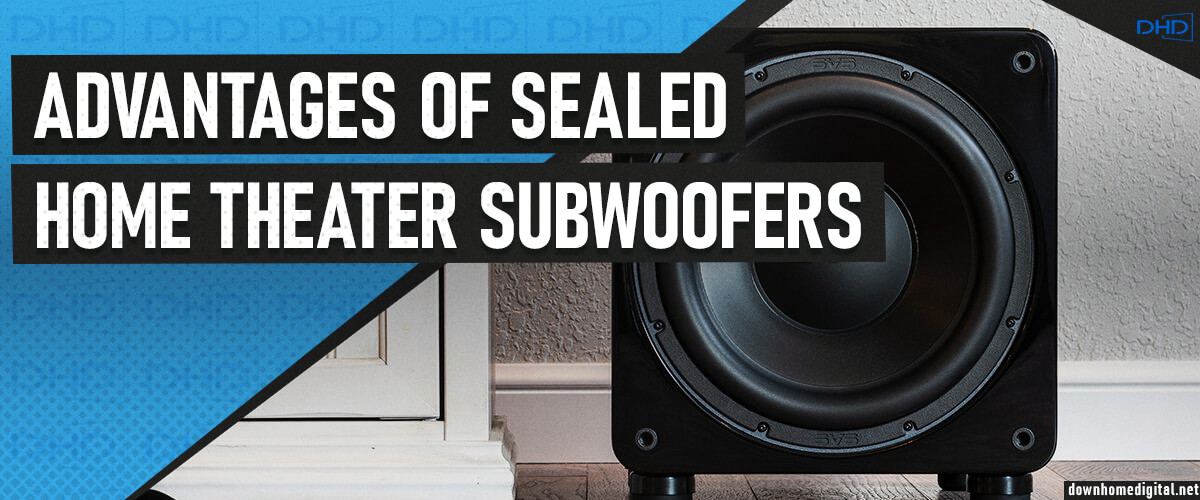
After reading the first part of my review, you’ve probably already appreciated the capabilities of the best-sealed subwoofers. With such a unit, you will always receive wonderful sound quality and enjoy watching favorite movies. In this type of speaker, the sound does not cause too many vibrations. The housing helps to reduce them and make sounds clearer.
Among the benefits of sealed home theater subwoofers, they are not very large and heavy. Their design and weight are suitable for moving them around the room to find the right place. With ported subwoofers, you will not be able to do that just by yourself.

